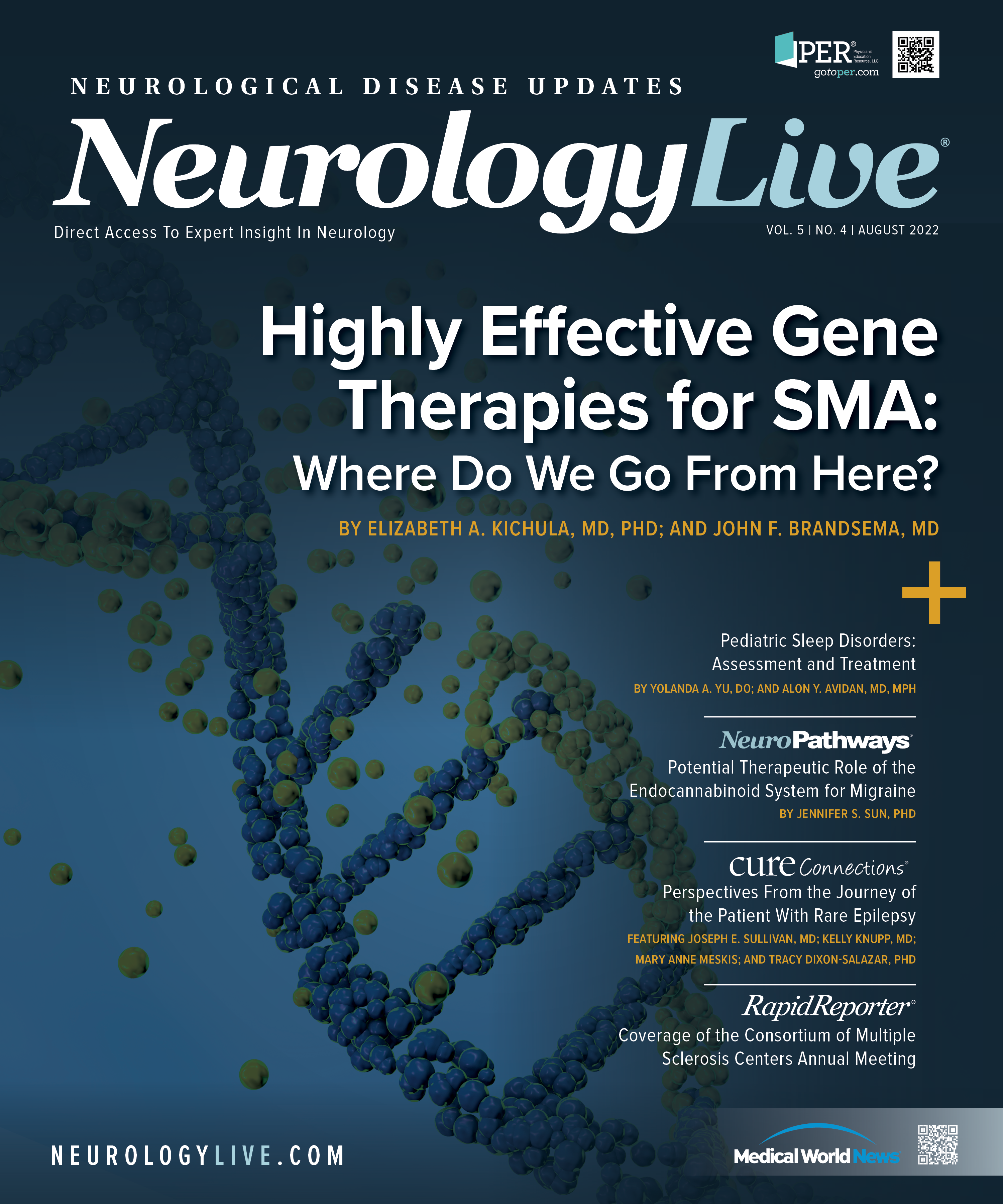Publication
Article
NeurologyLive
Plasma Neurofilament Level Correlated With Symbol Digit Modality Scores Following Ozanimod Treatment
Author(s):
Both ozanimod doses were associated with greater median reductions in plasma neurofilament light and mean improvements in SDMT score change than interferon beta-1a at month 12 of treatment.
Jeffrey A. Cohen, MD

Results from a post-hoc analysis of the SUNBEAM trial (NCT02294058) showed a negative association between plasma neurofilament light (pNfL) concentration and Symbol Digit Modalities Test (SDMT) score among patients with relapsing multiple sclerosis (MS). Patients treated with ozanimod (Zeposia; Bristol Myers Squibb) demonstrated decreased pNfL levels while improving SDMT scores to a greater extent than the comparator drug, interferon beta-1a.1
Senior author Jeffrey A. Cohen, MD, director, Mellen Center for MS Treatment and Research, Cleveland Clinic, presented the data at the 2022 Consortium of Multiple Sclerosis Centers (CMSC) Annual Meeting, June 1-4, in National Harbor, Maryland. The post-hoc analysis specifically evaluated relationships between pNfL concentration, analyzed with Simoa technology, and SDMT scores, a secondary end point of the trial.
The study included 1346 patients (mean age, 35.6 years [±9.3]) with relapsing MS who were treated with either oral ozanimod 0.92 mg (n = 447) or 0.46 mg (n = 451), or weekly intramuscular interferon beta-1a 30 µg (n = 448) for 12 months. Relationships between pNfL level and SDMT at baseline were evaluated with Kendall t correlation, and changes on treatment were assessed with linear regression and treatment-stratified bootstrap sampling.
At baseline, the median pNfL concentration was 14.7 µg (interquartile range [IQR], 10.2-23.3 pg/mL) and SDMT score was 48.0 (IQR, 38.0-56.0). The Kendall correlation between these variables was –0.10 (95% CI, –0.14 to –0.06), indicating a slight negative association. Based on 1000 bootstrap samples, greater median percentage reduction in pNfL levels were associated with a greater mean SDMT score change from baseline to the end of the observation period.
WATCH NOW:
Compared with those on interferon beta-1a, both ozanimod dosed groups were associated with greater median reductions in pNfL and mean improvements in SDMT, with the higher dosed group representing the greatest differences. Additionally, at the end of the 12-month treatment period, there were no relationships found between baseline pNfL level or change from baseline on any of the specific SDMT scoring categories (worsened/stable/improved based on ≥4-point change).
Ozanimod, a sphingosine-1-phosphate receptor, was approved by the FDA for the treatment of adults with relapsing forms of MS in 2020, with data from SUNBEAM and RADIANCE part B (NCT01628393) as the supportive evidence. In SUNBEAM, the annualized relapse rates were 0.35 (95% CI, 0.28-0.44) for interferon beta-1a compared with 0.18 (95% CI, 0.14-0.24) for the ozanimod 0.92-mg group and 0.24 (95% CI, 0.19-0.31) for the 0.46-mg group, for respective rate ratios of 0.52 (95% CI, 0.41-0.66; P <.0001) and 0.69 (95% CI, 0.55-0.86; P = .0013).2
In addition to reduced ARR, treatment with ozanimod was associated with a 63% relative reduction of T1-weighted gadolinium-enhanced lesions, and a 48% relative reduction in new or enlarging T2 lesions at 1 year in SUNBEAM.2 Similar reductions were observed at 2 years in RADIANCE, as well.3 Notably, there was no significant difference in confirmed disability progression between the 2 study drugs at 3 and 6 months.
Recently, at the 2022 American Academy of Neurology Annual Meeting, April 2-7, in Seattle, Washington, data from RADIANCE and its open-label extension DAYBREAK (NCT02576717) showed that a higher proportion of patients achieved no evidence of disease activity status 3 or 4 (NEDA-3 and NEDA-4) on ozanimod vs interferon beta-1a. At months 12 and 24 of RADIANCE, investigators observed NEDA-3 rates of 31.2% and 24.6% (P <.05) for ozanimod-treated patients vs 26.9% and 17.0% for those on interferon, respectively. In DAYBREAK, rates were 16.2% (P <.05), 13.4% (P <.05), and 10.7% with continuous ozanimod at months 12, 24, and 36, respectively, compared with rates of 9.8%, 8.6%, and 7.4% for those on/transitioned from interferon.4
Click here for more coverage of CMSC 2022.
REFERENCES
1. Harris S, Comi G, Cree BAC, et al. Inverse relationship between plasma neurofilament light chain concentration and symbol digit modalities test scores in the SUNBEAM trial of ozanimod in relapsing multiple sclerosis. Presented at: CMSC Annual Meeting; June 1-4; National Harbor, Maryland. Abstract DMT52
2. Comi G, Kappos L, Selmaj K, et al. Safety and efficacy of ozanimod versus interferon beta-1a in relapsing multiple sclerosis (SUNBEAM): a multicenter, randomized, minimum 12-month, phase 3 trial. Lancet Neurol. 2019;18(11):1009-1020
3. Cohen JA, Arnold DL, Comi G, et al. Safety and efficacy of the selective sphingosine 1-phosphate receptor modulator ozanimod in relapsing multiple sclerosis (RADIANCE): a randomized, placebo-controlled, phase 2 trial. Lancet Neurol. 2016;15(4):373-81. doi:10.1016/S1474-4422(16)00018-1.
4. Kappos L, Comi G, Selmaj K, et al. Evaluating no evidence of disease activity in patients with relapsing multiple sclerosis: post hoc analysis of the phase 3 RADIANCE and open-label extension studies of ozanimod. Presented at: 2022 AAN Annual Meeting; April 2-7; Seattle, Washington. Abstract 0839

2 Commerce Drive
Cranbury, NJ 08512
All rights reserved.





